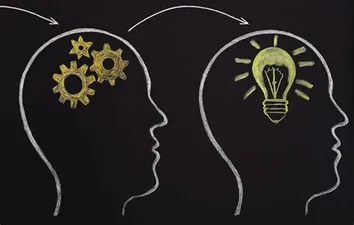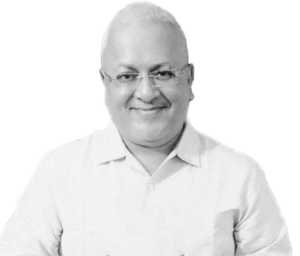


Have you noticed that on days when you are in a really good mood, everything feels great and you tend to ignore small ‘negatives’?
For example, when you are very happy, and someone accidentally breaks a nice piece of your crockery, you might smile and say, ‘it’s ok, it happens’, and you realise that the accident hasn’t spoiled your mood. On these ‘high and happy’ days, you end up laughing even at the most inane jokes.
On the other hand, on days that you feel blue and low, everything seems wrong and everyone seems at fault. On such days, even some ‘positive’ things seem irritating- and great jokes also seem flat to you.
This is because of the fluctuation of ‘prana’- the vital life energy that flows in us. Our level of joy is directly proportional to the amount of vital energy flowing in us. More the quantum of prana, the more joyous we will be.
When we have high prana, the mind does not hold on to negative thoughts or doubts. Rather, it starts looking for positives and overlooks niggling faults. On the other hand, lowered prana causes blue moods and depression.
We need to learn to recognise the symptoms of lowered prana. Our immunity will start falling quickly, and we will begin to feel frustrated and moody. In such a state, we will become prone to illnesses and stress-related disorders.
The movement of vital energy is intimately connected with posture and movement of our body. Notice depressed people often sit hunched over, they speak without clarity and their physical actions are slow. Conversely, poor posture will make us feel dull, as our breathing and energy channels become constricted, since the flow of prana gets reduced. On the other hand, watch people who are energetic and happy. They have a completely different posture. Their actions aren’t lathergic, and their speech is crisp and clear. Often, energetic physical exercise and a good posture will boost one’s moods and vital energy.
In The Millennial Yogi the protagonist Jay gradually falls deep into depression, deciding to end his life. It’s at this juncture that he encounters the mystic Vini, who helps the young man begin his journey of healing through simple, practical steps that raise his vital life energy. Once Jay’s prana is raised, he feels like a completely different man. Then, with Vini’s advice, Jay begins to reclaim his life, step-by-step. There are simple ways to raise the prana- eating a healthy diet, resting sufficiently, exercising moderately, practising pranayama, meditating, etc. Pranayama, in fact, is the most efficient way to increase one’s vital energy.
The quality and quantum of prana flowing within us body has a powerful effect on our moods, and ability to concentrate. The Yogasutras explain this intimate connection between the fluctuations of moods and thoughts (chitta vritti) and the fluctuations of our vital energy.
When the prana is still and controlled, our mind is calm and relaxed, and can focus, concentrate and assimilate. When the prana is agitated, our mind is like a whirlpool- with churning thoughts and uncontrolled moods.
When we learn how to control our vital life energy, we become a Mastermind – the master of one’s mind.
Lowered prana makes us prone to illness, since our vital energy is intricately linked to our immune system. If we catch the signs of impending illness before we become too sick, and we know how to manage our vital energies, we would be able to ensure that we keep our immunity high through simple processes. This will ensure that we recover faster from the illness, without causing too much stress or distress to our mind and body.

Deepam Chatterjee is the author of The Millennial Yogi. He can be contacted on deepamchatterjee@yahoo.co.in